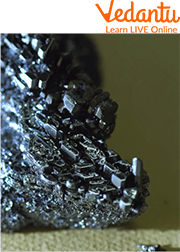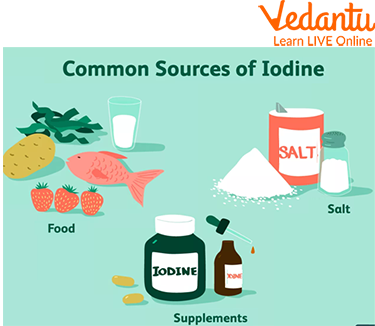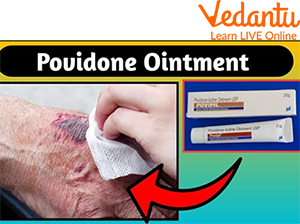




Overview of Iodine
Iodine has many industrial uses. For example, it is used in the production of polyvinyl chloride and plastics such as polystyrene and polyvinylidene chloride. It is also used to make rubber products such as elastic bands, clothes, shoes, and tires.
Iodine can be found in the human body. The thyroid gland needs iodine to make thyroid hormones that regulate how your body uses energy from food (metabolism). Iodine deficiency can lead to a goitre which can cause problems with breathing or swallowing food.

Iodine
What is Iodine?
Iodine is an element belonging to the halogens. It is non-metal, meaning it has no electrons in its outer shell, and as such can bind with other elements much more easily. The nucleus of iodine is composed of four particles: two neutrons, one proton, and one electron. It was discovered in 1811 by French chemist Bernard Courtois, who was born in 1778, but named it after the Greek word for violet because of its colour.
Iodine has a melting point of 254 oC and boiling point of 314 oC at normal atmospheric pressure. Although it is heavier than water, it is not toxic enough to be considered a heavy metal.

Common Sources of Iodine
Uses of Iodine

Rich Sources of Iodine
Iodine is a chemical element that has many uses in the world, including medical and industrial purposes. Iodine's most important uses are:
Iodine is important for thyroid hormone production.
Iodine helps regulate metabolism and maintain cell growth.
Deficiency can lead to hypothyroidism, goitre, and mental retardation.
Iodine is found in saltwater fish such as cod, salmon, and shrimp. It can also be found in dairy products like milk or yoghurt, as well as bread containing iodised salt.
What does Isotope of Iodine Treat?
The isotope of iodine is used to treat a variety of disorders in the treatment of cancer. It is given to patients before and during radiation therapy, to increase the absorption of radioactive iodine into the thyroid gland. It is also given to patients after total thyroidectomy (removal) and/or placement of radioactive iodine seeds placed in the neck under local anaesthesia because it helps destroy residual thyroid tissue, which can lead to the recurrence of the disease.
Iodine Ointment Uses

Iodine Ointment
Iodine ointment is typically used to treat skin conditions like eczema, psoriasis and acne. It has been in use since 1835 and helps treat a wide variety of skin problems by slowing down the growth of bacteria on the skin. It can help soften dry, scaly or cracked skin and ease itching as well.
It can also be used to relieve pain from insect bites or stings, allergic reactions, sunburns or other burns. The use of iodine ointment on an infant's umbilical cord can help prevent skin at the base of the cord from becoming infected.
Industrial Uses of Iodine

Industrial Use of Iodine
Iodine is an essential micronutrient that has many uses in industries. Major applications of iodine rank from the production of iodised salt to the creation of polyvinylpyrrolidone (PVP) and alkyl iodides. Iodine is a nonmetallic, toxic, and volatile element with low reactivity. PVP is polymerized into fibres that are used in water purification membranes because iodine ions can separate out hydrogen ions from water molecules to create hydrogen gas.
Summary
In this article, we learned that iodine is a chemical element discovered by French chemist Bernard Courtois in 1811, and he named it after the Greek goddess of the same name. It is an essential trace mineral for human health. We also learned the uses of iodine in everyday life range from its use as a food additive to its use as a treatment for thyroid disorders. Iodine is an important part of our daily lives and it can be found in many things such as table salt, bread, milk, seafood, and seaweed.
Iodine is a chemical element essential for life and essential to the human diet. However, iodine deficiency can lead to thyroid problems. It also has other roles in the body, such as regulating metabolism and maintaining cell growth.
FAQs on Uses of Iodine
1. What is the best source of iodine in foods?
Seaweed is the best source from where one can get iodine.
2. What can be the result of iodine deficiency in kids?
Iodine deficiency in kids can lead to mental developmental issues and reproductive function issues.
3. What is the chemical formula of iodine?
The chemical formula for iodine is I2.









